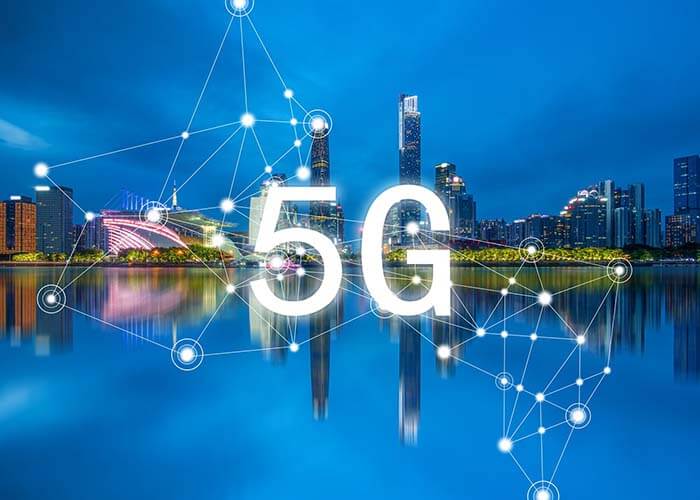
Despite the hype of 5G NR, Wi-Fi, and 5GNR together play an important role in corporate use cases such as remote patient care and smart manufacturing. How 5G Enhances WiFi in the industries?
As artificial intelligence and blockchain, 5G is one of the most discussed technology trends today.
5G new radio is a very new technology. In addition to faster speeds, when 5G is actually implemented, it offers low latency, high capacity, and higher data rates, opening the door to new applications.
The dramatic claim that New 5G will replace WiFi is unfounded. Can you imagine a university campus or hospital dismantling all wireless infrastructure and all Wi-Fi equipment and transferring everything to New Radio 5G? It doesn’t work today.
In reality, in the near future, Wi-Fi and cellular networks will co-exist, each addressing different use cases and working together to provide the best user experience.
Below are three examples from different industries to show how 5G can enhance existing Wi-Fi deployments.
Below are the 5G enhances wifi in 3 industries
How 5G Enhances WiFi in smart factories?
Few industries are as affected by 5G as manufacturing. In the manufacturing industry, the advent of cellular technology could stimulate the next industrial revolution.
Most factories continue to operate on Wi-Fi networks, but the wave of smart factories based on 5G technology is beginning to emerge. By 2023, smart factories could add US $ 1.5-2.2 trillion to the global economy each year, according to the report.
5G brings many benefits to the manufacturing industry. By powering mobile devices and robots, you can automate more manual processes and improve production efficiency.
At present, it is a daunting task to require manufacturers to dismantle and replace all existing wireless infrastructure and equipment with 5G. Needless to say, it’s unnecessary.
Wi-Fi is a viable option that can meet the many needs of today’s factories. The most likely scenario is for a factory to combine Wi-Fi and 5G equipment to deploy different wireless technologies in different use cases and applications, depending on specific bandwidth requirements.
How 5G Enhances WiFi in the classroom?
5G creates a new immersive learning experience in the classroom
Schools always rely on Wi-Fi technology to connect devices such as computers and tablets, but education is a mature area of 5G-related innovation. School days are usually defined by whiteboards, projectors, and pamphlets. These tools have been the foundation of schools for generations.
But imagine that you can move your students to a geological location or space station in the classroom. They can walk around and explore the surroundings without leaving the classroom.
The high bandwidth and low latency of 5G unleash the power of augmented reality (AR) and virtual reality (VR) technologies, enabling these experiences and providing students with new ways to attend courses.
For example, Cleveland’s K-8 Charter School Entrepreneurship Preparatory School was the first school in the United States to acquire 5G technology from Verizon as part of Verizon’s plan to provide 100 advanced technologies by 2021.
The school’s lab is equipped with virtual reality and augmented reality stations, allowing students to see a wealth of computer-generated images to see stars up close and move through the human body.
Few schools today have such positive technology. However, as 5G matures and continues to become widespread, this type of hands-on learning can become the norm.
How 5G Enhances WiFi in the healthcare industry?
5G can extend telemedicine and remote monitoring in healthcare
The COVID-19 pandemic accelerates major transformations in the healthcare sector and employs widespread telemedicine and remote surveillance to ensure that non-coronavirus patients are as far away from the hospital as possible. I was stimulated.
Wi-Fi has become an important way to provide medical services. This is because patients are now using their home wireless connections to communicate and receive care from doctors and nurses more than ever before.
5G has the potential to change the rules of the game and expand telemedicine in the areas of greatest need. Although the telemedicine industry has grown rapidly in the last few months, local communities often do not have access to the same virtual health services due to the lack of reliable broadband.
Expanding 5G to rural areas will give millions of patients access to primary treatments. This is important during a pandemic, as telemedicine also brings long-term benefits to rural areas, as there is a lack of provider choice in rural areas.
In the last decade alone, more than 120 local hospitals have been closed and accessible telemedicine is in urgent need.
While never replacing Wi-Fi in hospital campus environments, 5G has great potential for real-time remote monitoring via medical IoT devices.
Remote monitoring is often hampered by slow network speeds and connection instability. 5G-enabled IoT and wearable devices have large capacities and short latency, enabling healthcare providers to receive data in real-time to provide the best care and make faster decisions. I can do it.
There is demand for 5G and Wi-Fi
5G has great potential and plays a key role in improving interconnectivity and transformation. But in the hype, it’s almost impossible for people to exaggerate the strength and reliability of Wi-Fi technology, as well as the role Wi-Fi currently plays in maintaining our institutions and systems.
Wi-Fi continues to exist, but over the next few years, 5G will begin to integrate into multiple industries to complement and improve the user experience.
These are how the 5G enhances WiFi in 3 Industries, You may also be interested in the below articles.
What is the difference between WIFI and WLAN?
Summary of 41 Basic Knowledge of LTE
What Are The Advantages And Characteristics Of NB-IoT And LoRa?
